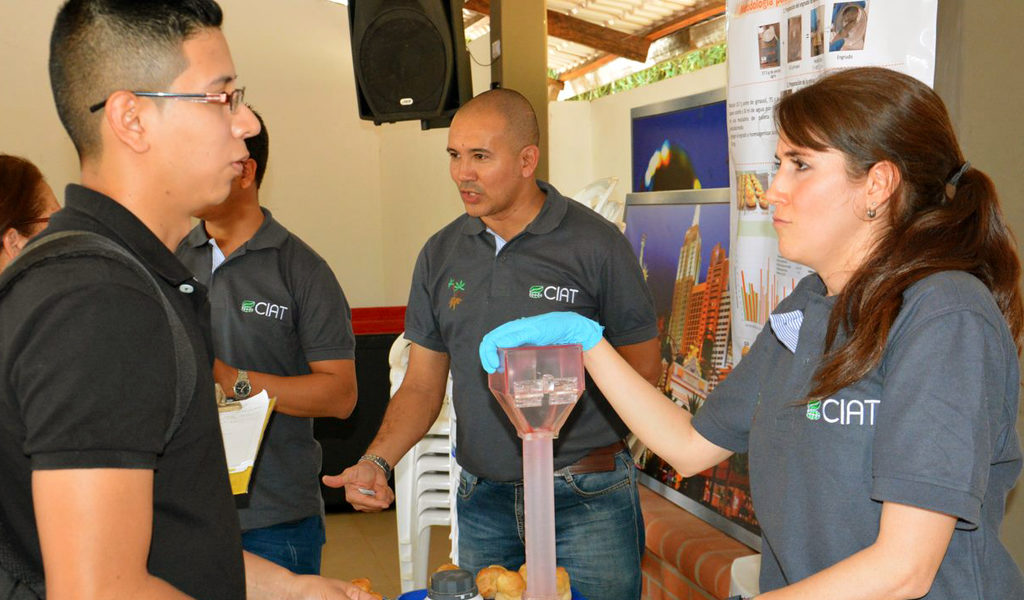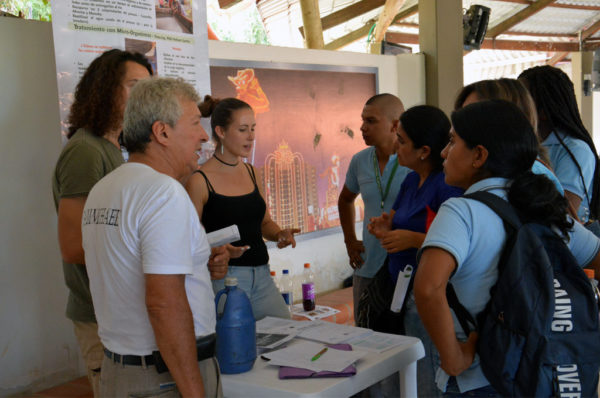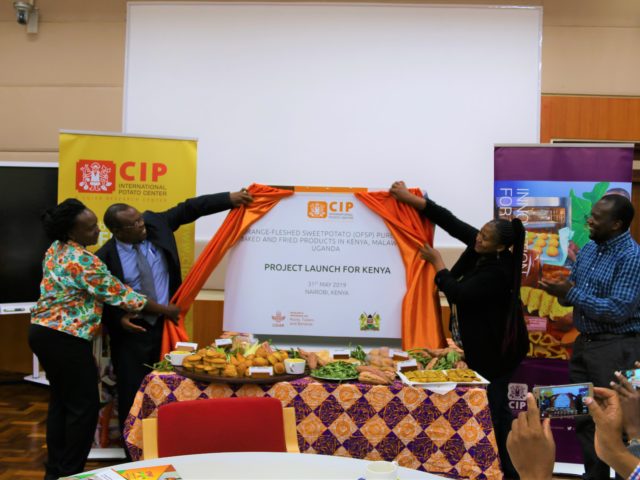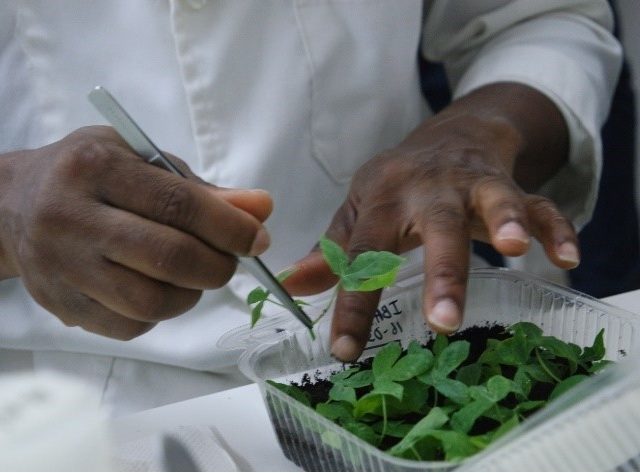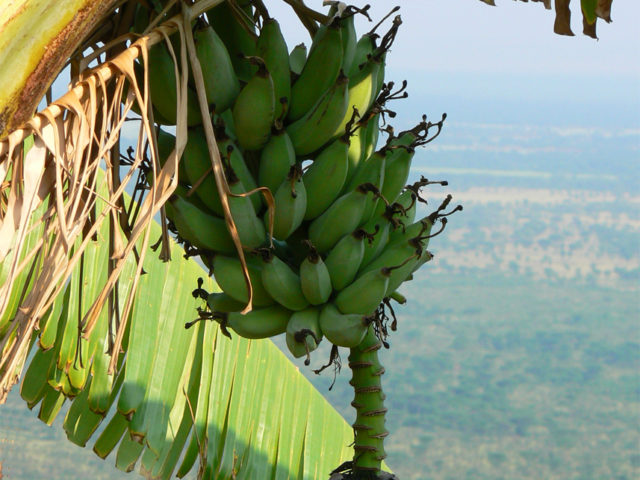With funding from the Roots, Tubers and Bananas Research Program (RTB), the International Center for Tropical Agriculture (CIAT) led a Field Day on “Changes in Cassava Starch Extraction Processes in the Last 20 Years,” held in the Department of Cauca on 25 February 2019. The purpose of the event was to present to cassava processors (known as rallanderos) the results of a PhD project carried out by Luis Alejandro Taborda, a visiting researcher at CIAT, on the evolutions of cassava starch processing between 1995 and 2017. Key findings were increased mechanization accompanied by a concentration of the production in the hands of fewer cassava processing factories.
“We shared the results of the research in the Cauca region and gave recommendations based on the doctoral thesis ‘Evaluation of the sustainability of the cassava starch value chain in the department of Cauca’. At the same time, we are bringing together institutions with active participation in the cassava value chain and in training and research such as SENA and the Colombian Agricultural Research Corporation (AGROSAVIA). These institutions have recently released new cassava varieties adapted to the climate in the Cauca, with improved yields and agro-industrial potential”. Luis Alejandro Taborda, CIAT visiting Researcher and PhD student in agroecology at the National University of Colombia (UNAL)
Hernán Granda, one of the rallanderos, said that “this initiative is excellent because the research must be shared with the community. I highlight the work of CIAT and AGROSAVIA because they have been a driving force for producers in the last five years and because they have had a more dynamic presence in the territory. The impact of the work is visible with increased starch production, and the fact that the rallanderias earn more money”.
During the day, Agrosavia presented the technological advantages of the new varieties: Corpoica Cumbre and Corpoica La Francesa. After the keynote presentations, a workshop was held where researchers from UNAL, CIAT, Universidad del Valle, CIRAD and AGROSAVIA interacted with rallanderos. Eight thematic stands presented the results of recent research projects in the cassava and starch sector. Topics such as the use of cassava shells for the production of edible mushrooms, wastewater purification, small-scale flash drying technology for starch or bagasse, technological alternatives for starch extraction, quality control of the expansion and baking of cassava bread, among others, were highlighted.
“These meetings are important to create opportunities for the actors of the cassava production system to meet, and to present to them what we do and where we are going in terms of research and development. We are producing new cassava varieties as well as advancing post-harvest technological developments. The idea is not only to stay in research, but to carry out evaluations under real production conditions in terms of yields, dry matter content, starch content, and other quality traits of cassava products “. Thierry Tran, Cassava Program Scientist, CIAT
The Field Day was attended by representatives of the National University of Colombia (UNAL), the University of Valle (Univalle), the Autonomous Regional Corporation of Cauca (CRC), the National Learning Service (SENA), the Colombian Corporation of Agricultural Research (AGROSAVIA), producers and rallanderos. “These initiatives help to have a global vision of the chain. There are genetic resources, crop management, processing, added value and trade; when all the actors are brought together in an event like this, there is a lot of exchange of information and knowledge because there are the segments of the chain: research, development, farmers and processors,” said John Belalcazar, research scientist for the cassava program at CIAT.
The impact that these types of initiatives have on the community is fundamental, particularly in the insights that can be generated on current environmental and socioeconomic hurdles, which in turn can inspire new initiatives between the community, authorities, and research institutions. Major issues that were discussed included reduction of water consumption and purification of wastewater effluents, management of agro-industrial waste, and the effects of the process on the quality of the end product. These elements can translate into research and development programs for the department of Cauca and other regions of Colombia in the future.
Written by Sylvia Pineda and first published on the CIAT website in Spanish.
